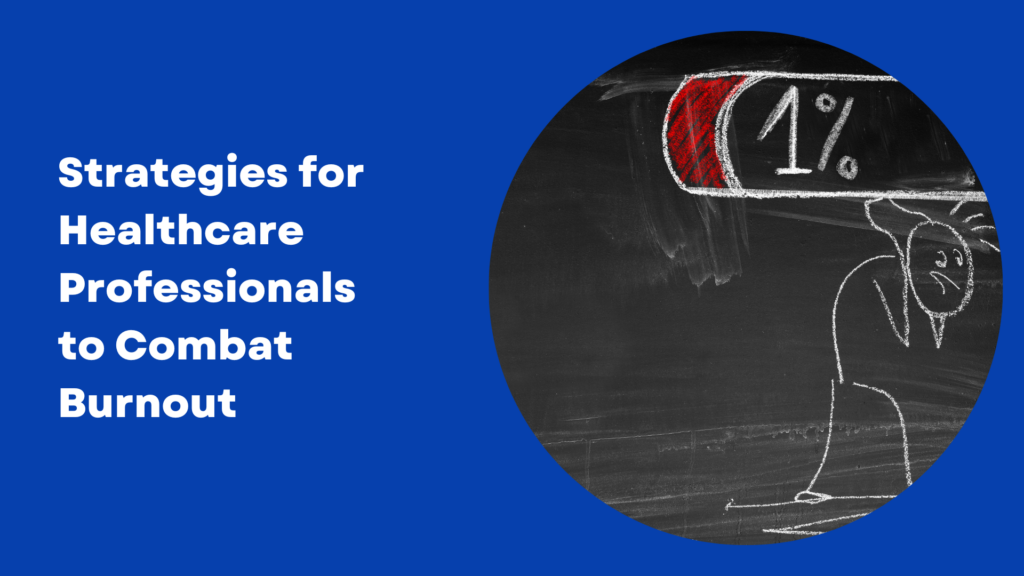Strategies for Healthcare Professionals to Combat Burnout
I still reference my well-worn copy of Dr. Herbert Freudenberg’s 1980 book Burnout: The High Cost of Achievement, which could very well have been published today. He coined the term “Burn-Out” based on his observations of high-performing clients who sought his help for their disengagement, disillusionment, and loss of drive and even meaning in their work. Freudenberger noted that they are like “a building that has been burned out…once a throbbing, vital structure is now deserted…crumbling reminders of energy and life…” Here is a more comprehensive description of Freudenberger’s work.
Freudenberger’s insightful descriptions of high-performing helpers is relevant to the healthcare industry now. The healthcare sector, renowned for its critical role in society, is also a field where professionals are highly susceptible to burnout. The ICD-10 defines burnout as “an occupational phenomenon”. It is a state of physical, emotional, and mental exhaustion, caused by prolonged and excessive stress, that not only affects healthcare workers’ well-being but also compromises patient care. Understanding the common causes and symptoms of burnout is the first step in combating this pervasive issue.
Understanding Burnout in Healthcare
Burnout across the workforce, and including healthcare professionals, is characterized by three main components: emotional exhaustion, depersonalization, and a diminished sense of personal accomplishment. In healthcare, the high-stakes environment, long hours, and the emotional toll of patient care contribute significantly to this condition.
Freudenberger described the type of person susceptible to burnout as “decent individuals who have striven hard to reach a goal…busy schedules…counted on to do more than their share…the leaders among us who have never been able to admit limitations…pushed themselves too hard for too long,” (pp. 11-12).
Common Causes of Burnout:
Excessive Workloads: The sheer volume of work, compounded by staff shortages, leaves healthcare professionals feeling overwhelmed.
Emotional Strain: Regular exposure to suffering and death, and the pressure to make critical decisions, can lead to emotional fatigue.
Lack of Control: Feeling unable to influence decisions that affect one’s job, such as schedules, assignments, or workload, can foster a sense of helplessness.
Symptoms to Watch For:
Chronic Fatigue: Feeling tired before the day begins and struggling with persistent exhaustion. Other physical symptoms may show up such as headaches, backaches, GI issues.
Detachment: A growing cynicism towards patients’ conditions and a reduced capacity to empathize.
Decreased Performance: A noticeable decline in the quality of care provided to patients, as well as reduced productivity.
Irritability: As burnout develops, impatience increases and leads to a steady state of frustration.
Denial: In Freudenberger’s words “people subject to Burn-Out are the carers among us…the caring has been shut off for a very good reason—and shut off by the person himself,” (p. 68)
Starting the Journey to Wellness
Acknowledging the presence of burnout is a crucial first step. Once identified, there are several strategies healthcare professionals can employ to begin reclaiming their well-being and enthusiasm for their work.
1. Stop. Look. Listen:
One must slow down look enough to take a closer look at what is happening, what’s working, not working and take stock. Burnout can steadily develop for years, and sometimes it takes big symptoms to force high performers to get honest.
2. Prioritize Self-Care:
Develop Healthy Habits: Working harder to beat burnout does not work. Rather, building in the basics of regular physical activity, a balanced diet, and adequate sleep can significantly impact overall well-being and resilience against stress.
Mindfulness and Relaxation Techniques: Practices such as meditation, yoga, or even simple breathing exercises can help manage stress levels effectively. The goal is simply to focus on the here and now which takes attention off of the never ending inbox and to-do lists.
3. Establish Work-Life Balance:
Set Boundaries: It’s important to delineate clear boundaries between work and personal life, ensuring that time off is respected and used for rejuvenation. One of my clients discovered, as he went to pull out his work backpack en route to his vacation, that his team had padlocked it. They were committed to their colleague’s taking a true break.
Take Time Off: Utilize vacation days and breaks to disconnect completely from work-related responsibilities, allowing for mental and emotional recovery. Schedule your days off for an entire year and build a rhythm of rest into your life.
3. Seek Professional Support:
Recognizing when professional help is needed is a sign of strength, not weakness. Mental health support, whether through counseling, therapy, or support groups, can provide valuable coping mechanisms and emotional relief. Knowing others have similar challenges and experiences is helpful. Many healthcare institutions often offer resources for their staff, including internal or external employee assistance programs (EAPs) and mental health services.
Coaching is another support option, depending on the situation. A coach who also has a clinical background can be extremely helpful in helping you determine what type of support would be most beneficial.
4. Foster a Supportive Work Environment:
Dr. Freudenberger noted that burnout is not solely an individual issue. He writes, “At the same time our society dangles the impossible dream in front of us, it sets the stage for Burn-Out by eroding tradition, banishing our support systems, barricading minority groups, and dissolving relationships…” (p. 198)
Organizations must commit intentioned strategy and evaluation of these meta influences on their employees. A positive and supportive work culture can significantly mitigate factors leading to burnout. This includes:
Open Communication: Encouraging open discussions about stress and burnout without stigma. This fosters a culture where seeking help and prioritizing mental health is normalized.
Team Support: Building a strong sense of team camaraderie where colleagues support each other during stressful times can alleviate the emotional burden.
Leadership Involvement: Leaders in healthcare settings play a crucial role in recognizing signs of burnout and initiating changes to reduce stressors. This might include adjusting workloads, providing more autonomy in scheduling, or ensuring sufficient staff levels.
5. Professional Development and Personal Growth:
Feeling stuck in a routine without opportunities for growth or learning can exacerbate feelings of burnout. Seeking out professional development opportunities can reignite a sense of purpose and fulfillment in one’s career.
Pursue Further Education or Training: Enhancing your skills or gaining new certifications can open up new avenues in your career, reducing monotony and reigniting passion.
Mentorship: Either being a mentor or finding a mentor can provide a new perspective and add meaning to your professional life, offering a sense of contribution and belonging.
Something New: Dr. Freudenberger recommended, “If you’ve stopped trying new activities, make a conscious effort to start again. Dig up your old adventurous spirit and get it going. Try jogging or skating or swimming or tennis or dancing, but try something.”
A Path Forward
Burnout in the healthcare sector is a significant challenge that demands a multifaceted approach. By understanding its causes and symptoms, healthcare professionals and leaders can take proactive steps towards mitigating its impact. Prioritizing self-care, establishing work-life balance, seeking support, fostering a positive work environment, and pursuing personal growth are critical strategies in navigating the storm of burnout.
It’s essential for healthcare professionals to remember that taking care of themselves is not optional; it’s a necessity. A well-cared-for healthcare provider can sustain the long game, is better equipped to care for others, recovers joy in the work, ultimately leading to improved patient outcomes and a more fulfilling career.
The journey to overcoming burnout is both personal and collective. By working together to support one another and advocating for systemic changes within healthcare institutions, it’s possible to create a healthier, more sustainable work environment for all.
Burnout recovery also requires deeper awareness for core motivations around meaning and purpose for the individual, the organization, and the industry. W. Timothy Gallwey in his book “The Inner Game of Tennis” concludes that his development of not just the outer game, but the inner game, included a years-long search “for a game worth playing” and that his discovery committed him to new enthusiasm, freedom from having to win but rather to play with excellence and that coming through obstacles gifts us realization of new and true potential.


